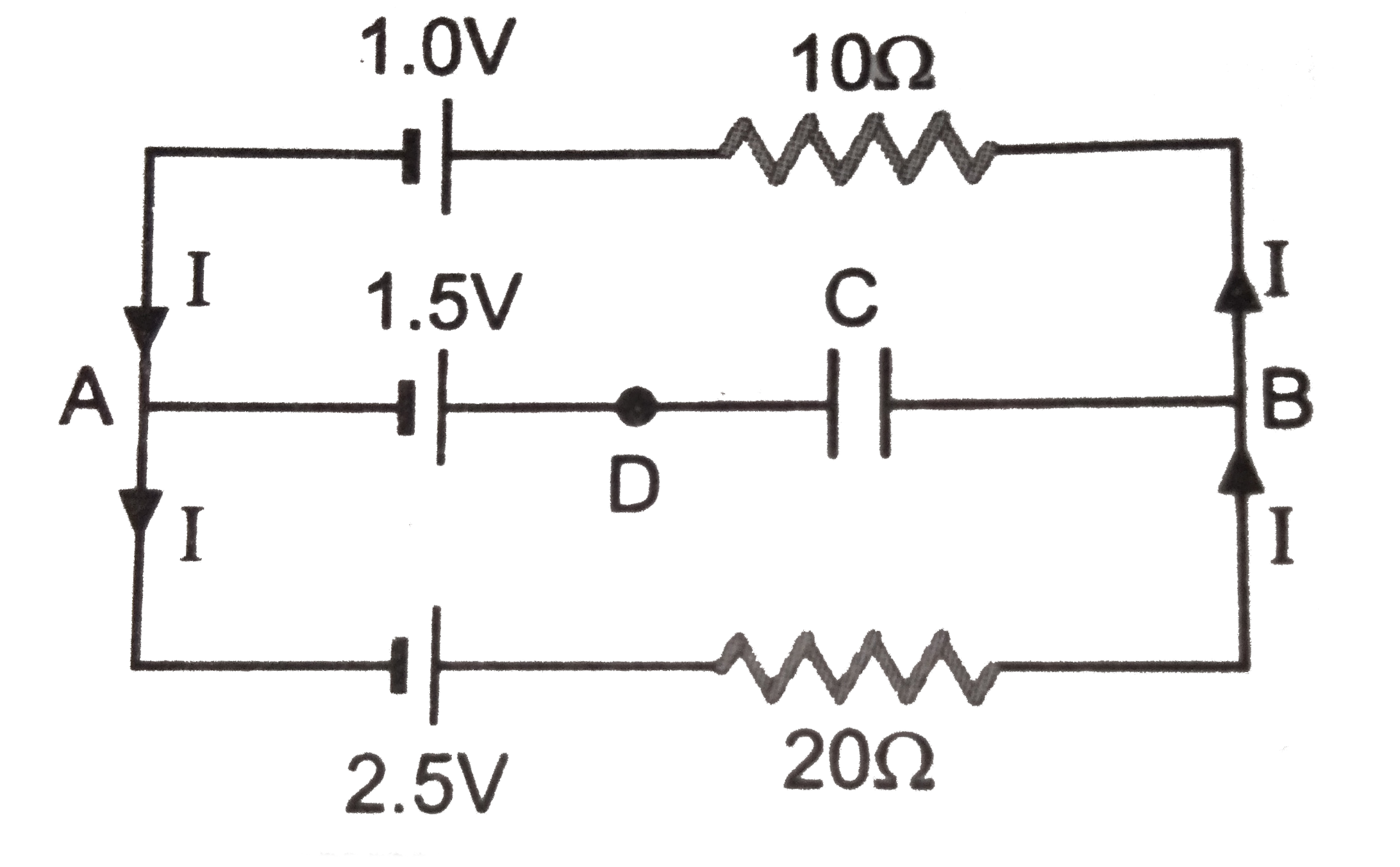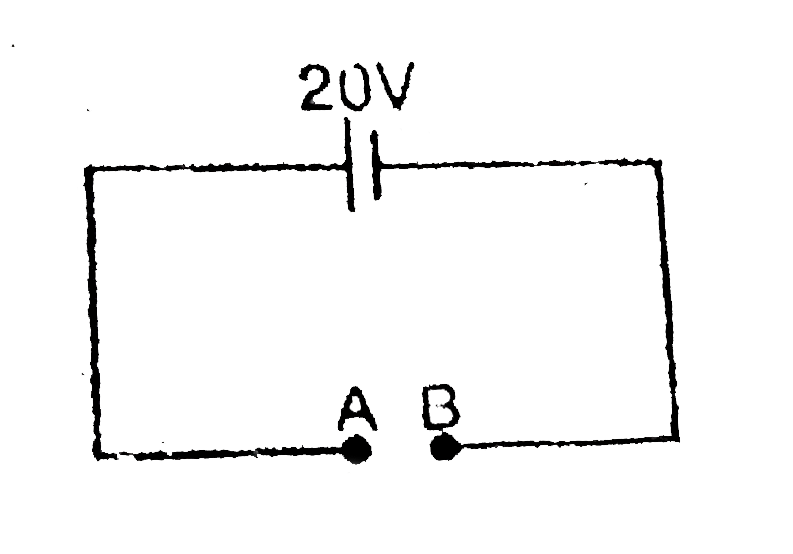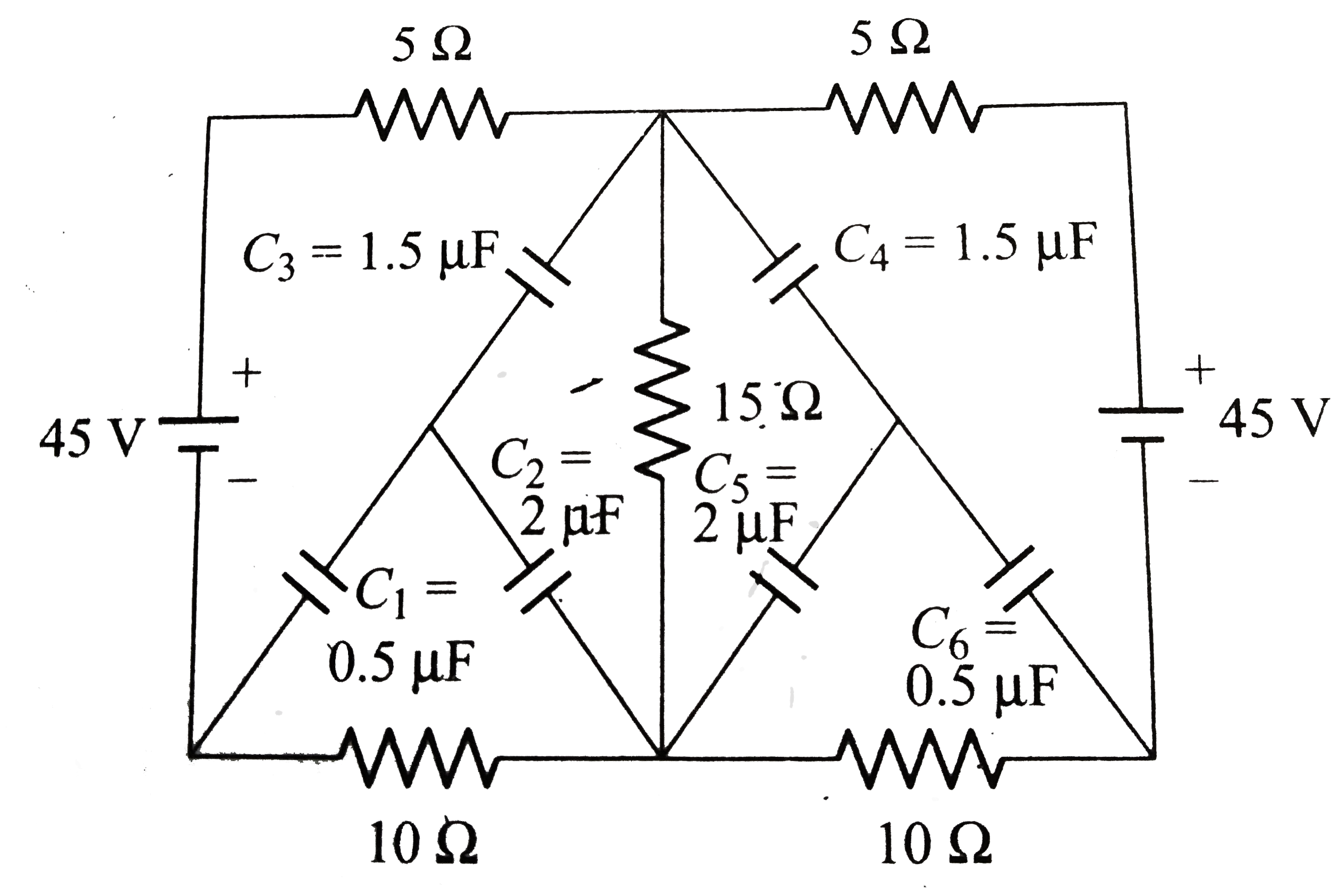In the fig. shown the circuit is in steady state.

How long does it take for the capacitor to discharge until the potential difference across it becomes 1V ?
A
1766.1μs
B
333.34μs
C
1000μs
D
333.34s
Video Solution
Text Solution
The correct Answer is:C
q=q0e−t/τV=V0e−t/τi=20e−3t1000t=1000s.
|
Topper's Solved these Questions
- CAPACITANCEBOOK - NARAYNACHAPTER - CAPACITANCEEXERCISE - Level-VI
28 Videos
- CAPACITANCEBOOK - NARAYNACHAPTER - CAPACITANCEEXERCISE - Subjective
9 Videos
- CAPACITANCEBOOK - NARAYNACHAPTER - CAPACITANCEEXERCISE - NCERT Based
13 Videos
- ATOMS BOOK - NARAYNACHAPTER - ATOMS EXERCISE - EXERCISE -4
47 Videos
- COMMUNICATION SYSTEMBOOK - NARAYNACHAPTER - COMMUNICATION SYSTEMEXERCISE - Level-II(H.W)
25 Videos
Similar Questions
Knowledge Check
In the fig. shown the circuit is in steady state.

If the battery is disconnected give the capacitor charge as a function of time.AQ=200e−3t/10BQ=200e−3t/1000CQ=200e−3tDQ=100e−3000tIn the fig. shown the circuit is in steady state.

what is the potential difference across the capacitor in steady state ?A5 VB10 VC20 VD40 VConsider the circuit shwon in fig. The circuit is in steady state.

The charge in capacitor isA2μCB4μCC6μCD8μC
In the circuit diagram find the potential difference across the plates of capacitor C

View SolutionIn the shown circuit, what is the potential difference across A and B

View SolutionIn the circuit shown in the figure, the potential difference across the 4.5μF capacitor is

View SolutionThe circuit is in a steady state.

The charge in capacitor C1 is
View SolutionIn the given circuit, with steady current, the potential difference across the capacitor is

View Solution


